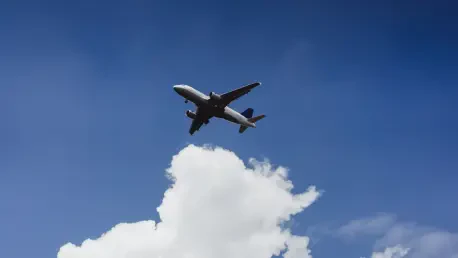Introduction to Disability Protections in Air Travel
Imagine boarding a flight, relying on a wheelchair for mobility, only to find that airline staff are unprepared to assist safely, or worse, that your essential equipment is damaged mid-journey with no clear recourse. This scenario is a harsh reality for millions of Americans with disabilities, underscoring the urgent need for accessibility in the aviation industry. Accessibility ensures not just convenience but also dignity and safety for passengers who face unique challenges during air travel, making it a cornerstone of equitable transportation.
Historically, the fight for disability rights in air travel gained momentum with the Air Carrier Access Act of 1986, landmark legislation prohibiting discrimination against individuals with disabilities by airlines. This act laid the foundation for subsequent regulations, mandating accommodations and setting standards for fair treatment. Over the decades, it has evolved to address emerging needs, though gaps in enforcement and implementation persist.
A significant step forward came with the introduction of the Wheelchair Rule, a regulation designed to strengthen protections specifically for passengers using mobility devices. This rule represents a pivotal effort to address longstanding issues such as equipment mishandling and inadequate assistance, aiming to transform the travel experience for those with disabilities. Its development underscores a broader commitment to inclusivity within the aviation sector.
Details of the Wheelchair Rule and Recent Delays
Core Provisions of the Wheelchair Rule
The Wheelchair Rule, finalized in late 2024, establishes several key requirements to enhance the air travel experience for passengers with disabilities. Among its core provisions are mandatory annual training for airline staff and contractors on how to assist passengers and handle mobility equipment with care. Additionally, it sets strict standards to ensure assistance is provided in a safe and dignified manner, prioritizing passenger well-being.
Another critical aspect of the rule addresses accountability for mishandled wheelchairs, stipulating that damage or delays to such equipment automatically violate the Air Carrier Access Act. This provision seeks to hold airlines responsible, offering passengers a clear path to recourse. The intended impact is profound, focusing on safety, respect, and ensuring airlines are answerable for lapses in service.
Ultimately, the rule aims to foster a travel environment where individuals with disabilities can navigate airports and flights with confidence. By emphasizing training and liability, it targets systemic issues that have long undermined accessibility, promising a shift toward greater equity in aviation services.
Trump Administration’s Decision to Delay
Despite the rule’s potential, the Trump administration has opted to delay enforcement of several specific provisions until at least December 31, 2026. These postponed elements include airline liability for damaged or delayed wheelchairs, the frequency of mandatory staff training, pre-departure notifications informing passengers of their rights to file complaints, and fare reimbursements for those forced to book costlier flights due to mobility needs.
The Transportation Department has justified this delay as a necessary step to review the provisions for alignment with legal statutes and current administration policies. The pause is framed as a temporary measure to reduce compliance pressures on airlines while a thorough reassessment is conducted, ensuring that any final regulation balances multiple interests.
Looking ahead, the department has outlined a timeline for a revised regulation, tentatively named Wheelchair Rule II, with a proposal expected by August 2026 and a final decision targeted for the end of that year. This roadmap suggests a commitment to refining rather than abandoning the protections, though the extended delay has sparked significant concern among stakeholders.
Challenges and Opposition to the Delays
The decision to postpone key aspects of the Wheelchair Rule has introduced immediate challenges for passengers with disabilities, who continue to face heightened risks during air travel. According to recent data, approximately 1 in every 100 wheelchairs or scooters on domestic flights is damaged, delayed, or lost, affecting the roughly 5.5 million Americans who rely on these devices. Such statistics underscore the tangible impact of delayed protections on daily travel experiences.
Advocacy groups, including Paralyzed Veterans of America, have voiced strong opposition to the delays, arguing that any postponement extends the vulnerabilities faced by wheelchair users. Representatives from these organizations emphasize that without full implementation, passengers remain exposed to safety hazards and indignities, urging swift enforcement of all provisions to mitigate ongoing harm.
Meanwhile, major U.S. airlines have mounted legal challenges against the rule, contending that the Transportation Department exceeded its authority in imposing these mandates. This resistance highlights a broader conflict between industry concerns over operational and financial burdens and the advocacy push for robust accessibility measures, creating a complex dynamic that complicates resolution.
Regulatory Landscape and Policy Implications
The broader regulatory framework for disability access in air travel is primarily governed by the Air Carrier Access Act, which serves as the backbone for ensuring non-discriminatory practices by airlines. This legislation empowers the Transportation Department to craft and enforce rules like the Wheelchair Rule, aiming to bridge gaps in service and protect passenger rights within a heavily regulated industry.
Under the current administration, a cautious approach to policy reevaluation is evident, with an emphasis on scrutinizing existing regulations for legal and practical fit. This stance has directly influenced compliance timelines, as seen in the delayed enforcement of critical accessibility measures, reflecting a preference for measured implementation over rapid change.
Balancing passenger rights with the operational and financial constraints faced by airlines remains a central tension in this regulatory space. While the intent to safeguard dignity and safety for travelers with disabilities is clear, the pushback from carriers suggests that achieving consensus on feasible standards will require careful negotiation and compromise in the coming years.
Future Outlook for Disability Protections in Aviation
Looking toward the horizon, the rulemaking process for Wheelchair Rule II holds significant potential to reshape accessibility in air travel, though its outcomes remain uncertain. If crafted effectively, the revised regulation could address current shortcomings while responding to industry feedback, potentially leading to a more balanced framework that still prioritizes passenger needs by late 2026.
Emerging advocacy efforts are also gaining traction, with increased public awareness driving demand for stronger accessibility measures. Campaigns by disability rights organizations are amplifying the voices of affected travelers, pushing for policies that tackle equipment mishandling and inadequate assistance head-on, which could influence the direction of future regulations.
Additionally, the trajectory of these protections may hinge on shifting political and economic conditions. Changes in administration priorities or industry pressures could either accelerate or further delay progress, making it imperative to monitor how external factors shape the final contours of disability-focused aviation policies in the near term.
Conclusion and Key Takeaways
Reflecting on the discourse surrounding delayed disability protections in air travel, it becomes evident that the postponement of key Wheelchair Rule provisions under the Trump administration has stirred significant debate among stakeholders. The clash between advocacy for immediate safeguards and administrative caution paints a complex picture of competing priorities.
Moving forward, a critical next step involves fostering dialogue between airlines, regulators, and disability advocates to expedite a viable version of Wheelchair Rule II. This collaborative approach could address legal concerns while ensuring that safety and dignity for passengers with disabilities remain non-negotiable.
Ultimately, the resolution of this issue demands innovative solutions, such as phased implementation or targeted support for airlines to ease compliance burdens. By focusing on actionable compromises, the aviation industry could work toward a future where accessibility is not just a regulation but a fundamental standard of service.









